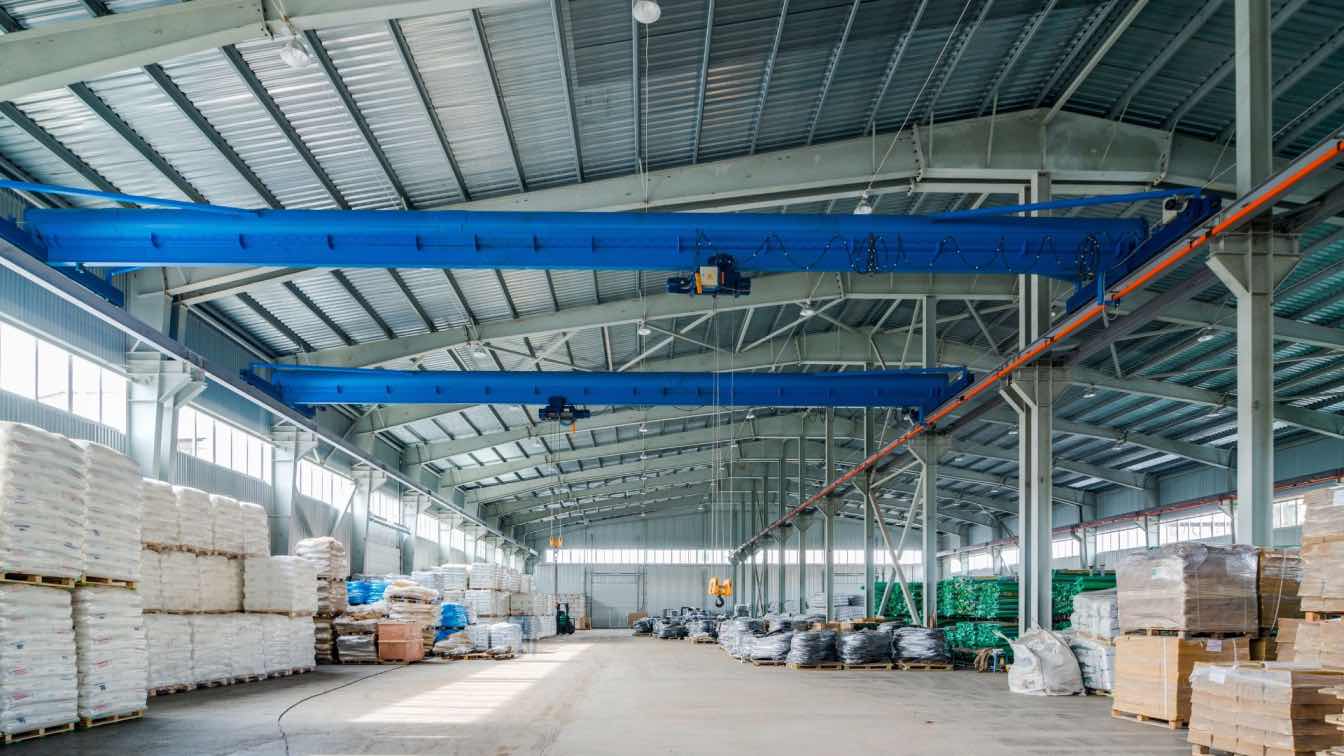In modern construction, steel structure warehouses have become the go-to choice for many businesses. Whether used for storing goods, equipment, or providing space for production, these warehouses offer high efficiency, cost-effectiveness, and durability, making them the industry standard. So, how can you plan and build a steel structure warehouse that meets today’s needs while allowing for future expansion? Today, I’m going to share some key planning and construction tips to help you create an efficient, safe, and eco-friendly warehouse.
1. Understand Your Needs and Customize the Plan
The first step in building a steel structure warehouse sounds simple, but it’s the most crucial one—understanding what you actually need!
Do you need a massive warehouse to store raw materials, or a smaller, more compact one for storing parts? The size, structure, and functionality of your warehouse depend entirely on your specific needs. For example, do you need a high-rack storage area for heavy items? Or perhaps a specialized refrigerated section for perishable goods?
At this stage, we must plan precisely according to actual needs. Think of it like customizing a suit: you can’t just blindly pick an "XXL" size, nor can you settle for a "skinny fit" for everything. The right warehouse size will not only give you sufficient space but also maximize storage and retrieval efficiency.
2. Choose the Right Steel and Structural Design
When we talk about steel structures, the first things that come to mind are usually “durability” and “stability,” but the selection of steel material and the type of structural design are what make your warehouse stand the test of time.
First, the choice of steel is critical. Most steel structure warehouses commonly use carbon steel materials like Q235 and Q345, which offer good strength and ductility for most conventional warehouses. However, if your warehouse needs to support heavy machinery or chemical materials, you might need higher-strength materials, such as high-strength alloy steel, which can handle larger loads.
The structural design is another vital aspect. Common warehouse designs include:
Single-span structures: Ideal for warehouses that need a large space without many subdivisions. These structures provide ample space but may increase construction costs.
Multi-span structures: Suitable for warehouses with many partitions. These designs can greatly enhance space utilization and improve structural stability, making them perfect for more complex storage needs.
When designing, choose the structure that best matches the weight of the items and the warehouse’s functions to avoid "overloading" or "space wastage" issues later on.
3. Efficient Layout—Streamlined Design to Maximize Space Utilization
A warehouse is a place of meticulous management, and the layout directly impacts operational efficiency. One principle to remember: streamlined design! A reasonable logistics flow ensures that personnel, goods, and equipment move in an orderly manner, preventing congestion and improving overall efficiency.
Functional Areas:
Storage area: This should be the core of your warehouse. Divide it based on the types, volumes, and storage methods of the goods.
Sorting area: If your warehouse involves sorting, it’s advisable to set up a dedicated sorting area.
Inspection area: Quality checks are essential. An independent inspection area will facilitate management and improve operational efficiency.
Packaging and shipping area: This area is where the final step occurs—packing goods and shipping them to their destination.
Ensure that all these zones are connected by well-planned pathways to prevent chaos, especially between heavy equipment areas and daily access zones. The distance between these areas should be large enough to reduce the risk of collisions.
4. Building a Green, Safe, and Healthy Warehouse
When we talk about building a warehouse, many people overlook the importance of safety and environmental protection. As a business owner, it’s essential to consider both "storage capacity" and "safety and eco-friendliness."
Fire Safety: Warehouses often store a variety of materials, some of which may be flammable or explosive. Ensuring proper fire safety measures is vital. Based on the warehouse structure, install sufficient fire extinguishers, automatic sprinkler systems (e.g., sprinkler systems), and clear emergency evacuation routes with signs.
Ventilation: If you store chemicals or hazardous materials, a good ventilation system is a must. Properly placed vents and exhaust systems will ensure air circulation, reducing the concentration of harmful substances.
Environmental Protection: As businesses are increasingly focusing on environmental issues, using eco-friendly building materials and reducing harmful emissions is both a legal requirement and a corporate social responsibility. Additionally, planning energy-efficient systems, such as solar power or rainwater collection, can boost your warehouse’s environmental sustainability.
5. Plan for Future Expansion
Today’s needs may not represent all future demands. When planning and building your steel structure warehouse, it’s crucial to consider potential future expansion. Whether it’s adding storage capacity or introducing new automation equipment, reserving space for future expansion can save you from costly rebuilding projects later on.
For example, you could reserve interfaces or load-bearing facilities to facilitate the future addition of shelves, power system upgrades, or automated logistics equipment. Don’t wait until the warehouse is finished to realize that expansion space is insufficient or that the facilities don’t support new technologies.
6. Improve Warehouse Efficiency
As technology advances, many warehouses are adopting automated equipment and intelligent systems. For example, Automated Storage and Retrieval Systems (AS/RS) can significantly improve the efficiency of storing and retrieving goods, while Warehouse Management Systems (WMS) allow real-time inventory monitoring and optimized workflows.
If your business involves high-frequency goods turnover, utilizing modern technologies will not only improve efficiency but also reduce human errors and optimize resource allocation.
Conclusion
Building a metal building warehouse is not just a technical task—it’s a comprehensive planning and future-proofing challenge. Careful demand analysis, material selection, structural design, layout planning, safety, and environmental measures—along with foresight for future expansion—must all be thoughtfully considered. If you’re considering building a steel structure warehouse, start with a detailed plan, and create a warehouse that will become the solid foundation for your business’s growth and success.





